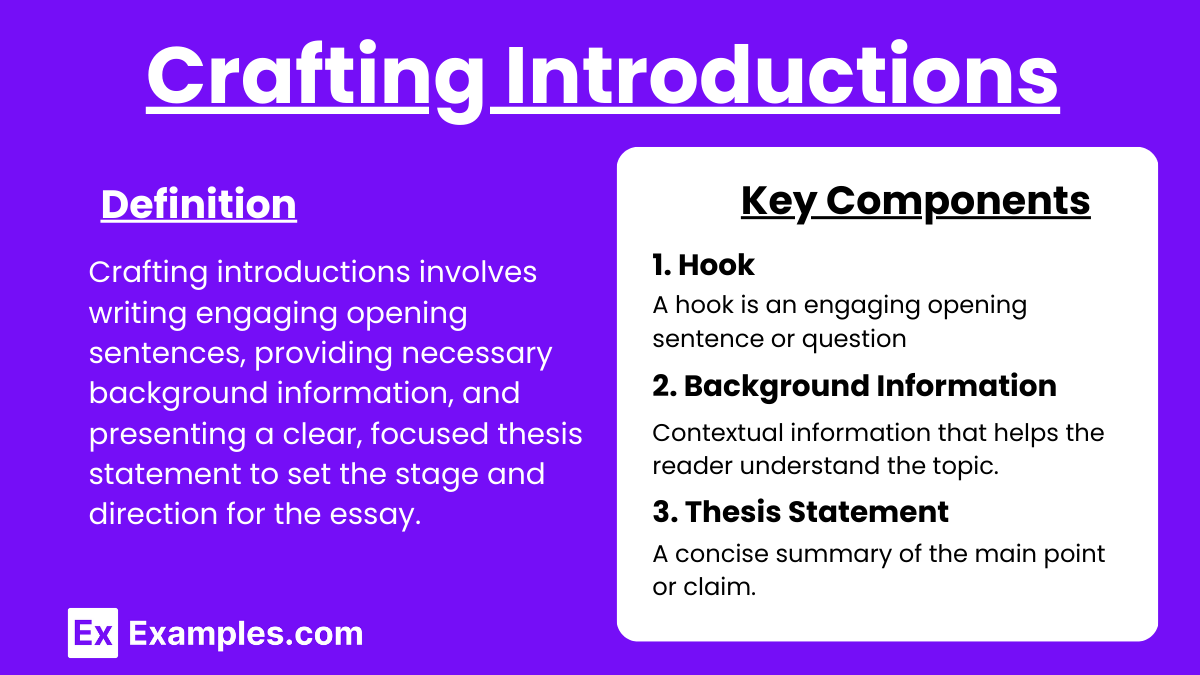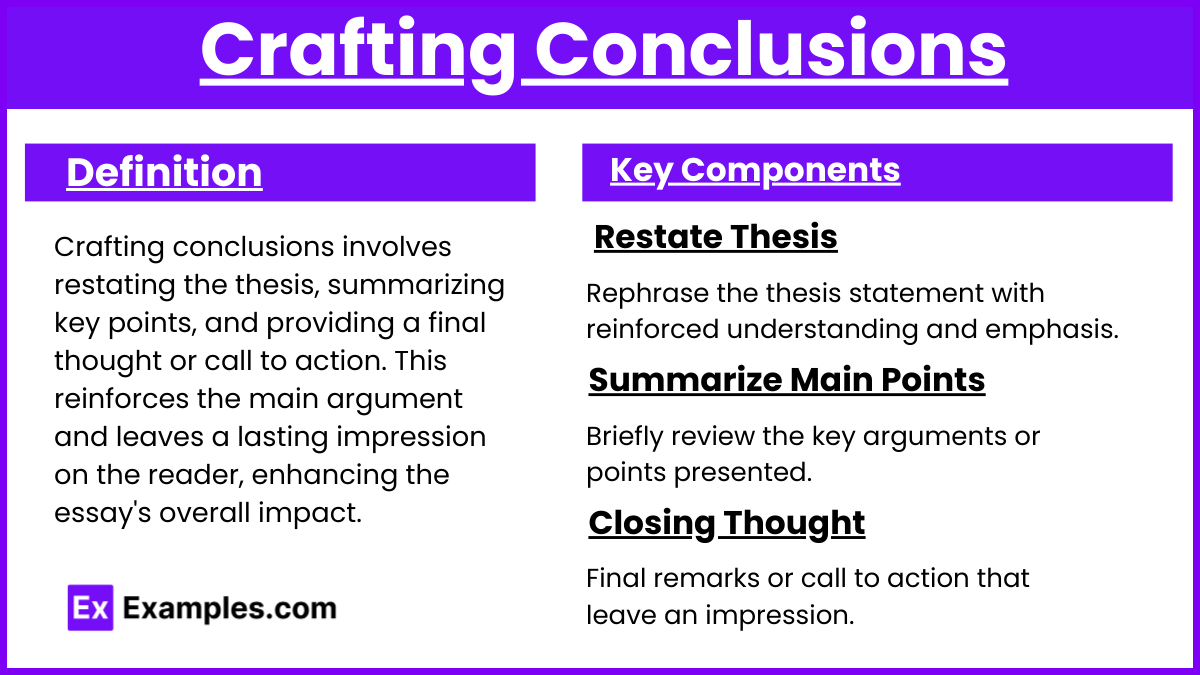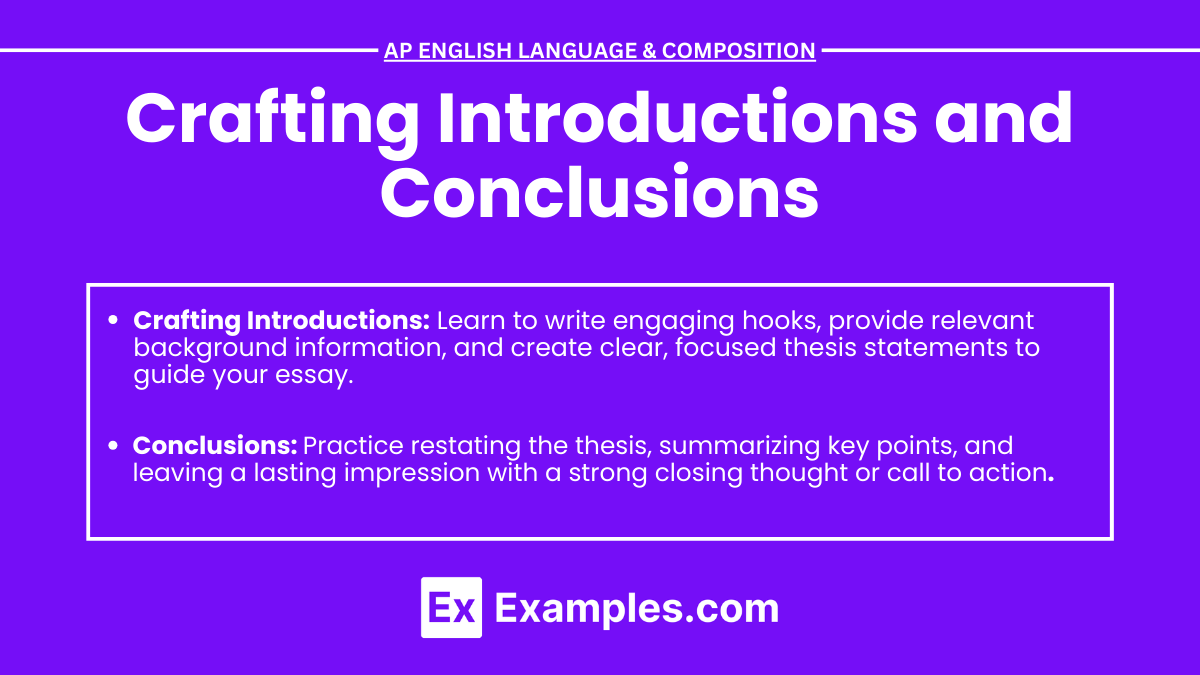Crafting Introductions and Conclusion in the AP English Language and Composition exam, the ability to craft effective introductions and conclusions is crucial for writing compelling essays. An engaging introduction captures the reader's attention, provides necessary context, and presents a clear thesis statement. Similarly, a strong conclusion reinforces the main arguments, restates the thesis in light of the evidence presented, and leaves a lasting impression on the reader. Mastering these techniques not only enhances the coherence and persuasiveness of your essays but also demonstrates your command of academic writing. By focusing on the essential components and strategies for both introductions and conclusions, students can significantly improve their writing skills and overall performance in the exam.
Free AP English Language and Composition Practice Test
Learning Objectives
By studying the topic of crafting introductions and conclusions, students will achieve several key learning objectives. They will learn to create effective introduction sentences that capture the reader's attention and set the stage for the essay, whether it’s an explanatory essay or an argumentative speech. Students will understand how to structure their essays following MLA writing guidelines, ensuring their introductions and conclusions meet academic standards. They will master the use of rhetorical sentences and rhetorical writing techniques to enhance the persuasiveness and impact of their essays. Additionally, they will learn to deliver compelling introduction speeches and craft powerful closing statements that leave a lasting impression on their audience. These skills are crucial for producing well-organized, engaging, and effective written and spoken arguments.
Crafting Introductions

Purpose
The introduction serves to:
Grab Attention: Engage the reader with a hook.
Provide Background: Offer context for the topic.
State the Thesis: Present the main argument of the essay.
Key Components
Hook
Definition: A hook is an opening sentence or question designed to catch the reader's interest.
Types: Anecdote, quote, question, startling fact, or a bold statement.
Example: "Imagine a world where the air we breathe is as toxic as cigarette smoke."
Background Information
Definition: Contextual information that helps the reader understand the topic.
Purpose: Sets the stage for the argument, providing necessary context.
Example: "In recent years, pollution levels have skyrocketed due to industrial activities and lax environmental regulations."
Thesis Statement
Definition: A concise statement that presents the main argument or claim of the essay.
Purpose: Guides the direction of the essay.
Example: "Stricter environmental regulations are essential to combat pollution and protect public health."
Strategies for Crafting Introductions
Start with a Hook: Use an engaging opening to draw the reader in.
Provide Context: Briefly explain the background of the topic.
State Your Thesis: Clearly present your main argument or point.
Crafting Conclusions

Purpose
The conclusion serves to:
Summarize Key Points: Recap the main arguments.
Reinforce the Thesis: Restate the thesis in light of the evidence presented.
Leave a Lasting Impression: Provide a final thought or call to action.
Key Components
Restate Thesis
Definition: Revisiting the thesis statement with a deeper understanding based on the essay's content.
Purpose: Reminds the reader of the main argument.
Example: "Given the evidence, it's clear that stricter environmental regulations are crucial for mitigating pollution."
Summarize Main Points
Definition: Briefly review the key arguments made in the essay.
Purpose: Reinforces the main points for the reader.
Example: "Industrial emissions, vehicle pollution, and deforestation are significant contributors to environmental degradation."
Closing Thought
Definition: A final remark or call to action that leaves a strong impression.
Purpose: Encourages the reader to think further or take action.
Example: "To ensure a healthier future, we must prioritize and enforce robust environmental protections."
Strategies for Crafting Conclusions
Restate the Thesis: Begin by revisiting your thesis statement.
Summarize Key Points: Highlight the main arguments discussed in the essay.
End with a Strong Closing Thought: Leave the reader with a memorable final thought or call to action.
Examples
Example Introduction
Hook: "Every year, thousands of marine animals die due to plastic pollution."
Background Information: "Plastic waste has become a pervasive problem, impacting ecosystems around the world."
Thesis Statement: "Implementing stricter regulations on plastic production and disposal is crucial to preserving marine life."
Example Conclusion
Restate Thesis: "In conclusion, stricter regulations on plastic use are essential for protecting our oceans."
Summarize Main Points: "By reducing plastic production, improving waste management, and promoting recycling, we can mitigate this crisis."
Closing Thought: "It's time to take decisive action to safeguard our marine ecosystems for future generations."


